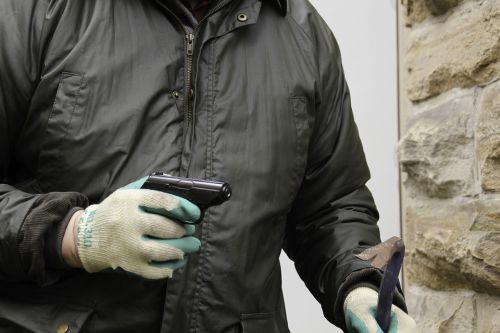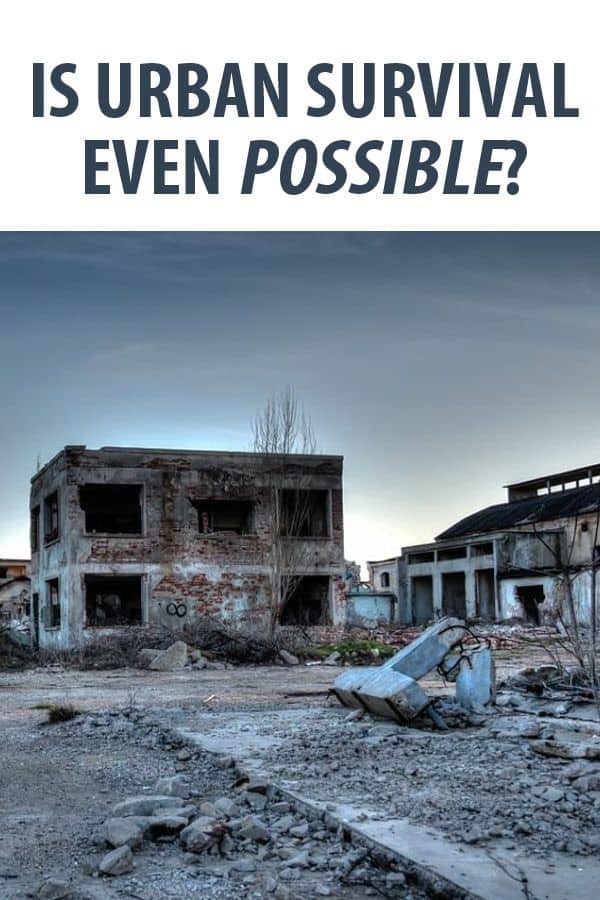by Contributing Author
Rifles, specifically carbines, are excellent choices for a defensive long gun, especially when chambering an intermediate cartridge. Their combination of desirable characteristics such as light weight, compact size, mild recoil and superior projectile performance make them ideal for any setting save the most confined quarters. The choice is obvious: if a carbine is a viable option for defense, you are almost always better off choosing it than a handgun.
But any carbine is incomplete without some additional equipment to enable the shooter to use its full potential in the context of self-defense. Some of these accessories are to help the shooter manage the gun; others help the shooter process a possible threat. All of them add capabilities to the carbine that are so vital they are nearly mandatory enhancements.
In the list below, I will rank them in what I consider to be descending order of importance, that is with the most important items first. Before we get to the list, we will establish a basic premise of what a defensive carbine is in the context of this article.
What a Defensive Carbine Is and What it Isn’t
For our discussion, it will be beneficial to constrain our idea of a defensive carbine into a few coarse parameters. Of course, the literally-minded and pithy readers will immediately proclaim that any rifle or carbine that you happen to be using to defend against a present threat is a defensive carbine. This is true in spirit, and perhaps a credit to their mindset that training and will to prevail are more important than the weapon, but one could also show, logically, that a tool designed for the task makes light of the work, where one intended for another purpose is clumsy at best or dangerous liability at worst.
Any gun will do if you can do, but if you have a choice it is best to pick the one, right tool: by way of example, all hammers are hammers, but a carpenter’s hammer and a tack hammer are similar only in their basest attributes, and neither is suited to the other’s purpose. Sure, you may be able to use one for the other in a pinch, but the work will be harder, and may suffer for it. The same largely applies to guns.
First, our carbine is not a long or ungainly rifle designed for hunting, sniping or other long range shooting. Such long or heavy rifles are too slow and awkward to maneuver to be of much use inside a dwelling. A carbine, after all is a shorter, typically lighter breed of rifle, and is our modern ideal for self-defense.
Second, our defensive carbine should be of intermediate caliber, with the current paradigm being 5.56mm NATO or its civil counterpart the .223 Remington, and the 5.45mm Russian. Cartridges in this class offer the best combination of terminal effectiveness, capacity and mild recoil.
One may choose a slightly larger cartridge, like 6.8mm SPC, 7.62mmx39mm or 7.62mm NATO, but with these cartridges you incur significant penalties in both handling and recoil for their increased power. That power may be wasted in the context of self-defense at closer ranges, and their increased penetration presents significant liability concerns. Tiny rounds like the .22LR, .22 Magnum or 5.7x28mm should be chosen only when a gun with very light weight and negligible recoil must be sought.
Pistol caliber carbines, or PCCs in common parlance, are seeing resurgence in popularity but a pistol round fired from a long gun is still a pistol round, and aside from better hit probability you will not see any significant gain in performance from increased velocity. Do not let the neat perk of sharing ammunition with your handgun sway you from a proper rifle cartridge; if you are committing to the weight and bulk of a long gun, it is best to get the commensurate level of performance from it.
Third, the carbine should be capable of rapid follow-up shots and possess adequate ammunition capacity. Exactly how much capacity equals “adequate” is a subject of constant debate. If you adhere to the school of statistical averages, a gun with a capacity of 5 rounds is adequate, with the majority of defensive shootings being resolved in 3 rounds or less. Proponents of greater capacity will note that if you trust to those averages you can trust the averages that you won’t need a gun at all, so why bother.
Again, the ideal here is a semi-auto, detachable magazine-fed design. For some, a lever, bolt or pump-action design is either all that is available to them or permissible. My preference would lean strongly toward the pump or lever action, then the bolt gun. The first two are easier to run faster with less practice.
If you are stuck with one of the above manually operated actions, such is life, but do not forget that rifles of that nature have been getting it done for well over a century all around the world. Do your best to optimize your shooting performance with what you have, and seek solutions to mounting the requisite items.
The Upgrade List
Next we’ll examine the accessories and equipment that will upgrade our capabilities and complete the carbine. Remember, these are presented in descending order of importance, so if you have very limited funds and can only equip your gun with one or two, start here at the top and work your way down.
Weapon Mounted Light
If you only decide to buy one item because of this article, make it this one. When using a pistol, one has the option to mount a WML or utilize a handheld light. No such luck with a long gun, as anyone who has ever tried to use a handheld in conjunction with a rifle or shotgun will tell you that operation is fraught with mishap and frustration. A WML is the only way to go.
A white light is necessary on a defensive gun for a few reasons, principally it allows you to positively identify a potential threat in any condition of no or low light: who are they, what are they doing, and are they armed? This is absolutely essential for any use-of-force scenario, as positive ID of the target is a prerequisite to using force, especially lethal force. There are plenty of sad tales of citizens shooting at family members or innocents in the dark due to not having all of the information necessary to make a shoot/no-shoot decision. The light would have provided that.
Also, if you cannot articulate to authorities precisely why you needed to shoot when you did, you are going to have a rough go of things in the trial that ensues. Rest assured if the shooting takes place in a time or area of low light, you will be asked how you knew that the shootee needed shooting. You had better be able to answer honestly that you saw that the threat was imminent and lethal before you decided to fire.
Another advantage of a high-output WML is the ability to overwhelm an adversary’s vision with directed white light. While not “blinding” as commonly described, a powerful white light directed at an adversary will drastically impair his vision. Sight is the primary sense of humans, and reducing or degrading it is a useful strategy to help control someone or win a fight.
If using iron sights, a WML allows for easier perception of the sights in the dark, as the brilliant beam will backlight your irons sharply, making them stand out in crisp, well defined black against the now lit background. In the absence of an optic, this will allow precisely aimed fire in low light conditions.
WMLs are simple to install today thanks to a variety of mostly standardized interfaces and can be mounted on virtually any long gun, including older, manually operated designs so long as it has an appropriate rail (or you are willing to install one). While easy to install, proper use of the light is a skill in itself, and will require training and practice to get the most out of it while minimizing the chances of illuminating yourself.
The switching setup is another issue, and will take the form of a remote pressure pad, tailcap button or rocker-type switch. Other positive attributes you should seek in selecting a light are high output of 500 lumens or more, a reputation for ruggedness and reliability and a small form factor. Good WMLs that can handle the stress and shock of firing are not cheap, especially when factoring in the cost of necessary mounts and furniture, but you get what you pay for. Expect decent models from Streamlight to start around $150.00 and go up. Surefire’s WMLs start around $300.00.
If you are on a budget and your firearm has a 1913-STD “Picatinny”rail or can accept one, a less expensive solution is to use a decent quality hand-held and install it on the long gun using a simple ring mount for the purpose. So long as the activation switch is reachable without taking your support hand off the forend, most will work just fine.
Sling
This is nearly tied in importance with a light for must-have equipment on a long gun. A sling is to a carbine what a holster is to a pistol; you must have a place to put the gun if you don’t want to set it down when you need to go hands-free. Slings also aid with weapon retention, and can be used to improve your shooting position for longer range shots (admittedly not a concern for the average self-defense engagement, but an advantage nonetheless).
Often neglected on a dedicated defensive gun, a proper sling will allow you to go let go of the carbine for any purpose while still keeping it ready for instant use, if necessary. It is not hard to imagine a situation where you may need both hands free, be it administering aid, opening doors, carrying something or someone, or similar.
In a longer term crisis scenario or disaster, where one may need to have their carbine slung and ready for extended periods of time, a sling will let you carry it out of the way and walk, climb or work more conveniently, as the rifle can be stowed and still produced quickly in the event it is needed.
Having a long gun attached to your body via a sling also makes it significantly more difficult to for an attacker to turn it around and shoot you with it should he lay hands on it. This is no free lunch, as one who gets control over the gun will also, ergo, have some control over the person tethered to the gun. Still, this advantage outweighs the disadvantage.
Slings run the design gamut from simple straps to complicated, multi-adjustable crazes of buckles and nylon. The most common varieties are single point, or one point, and two point slings. Three point slings exist, and are still made today but are largely going extinct. Single point slings hook up to the gun at a single point on the receiver, hence the name, and are a popular make. They allow great mobility and freedom of movement for easily switching shoulders, but do little to support the carbine out of the way when it hangs, and are best used on very short barreled guns.
Three point slings hook up to the gun at two places on the gun, fore and aft, sometimes on the receiver and sometimes on the stock and forend, with a third point of contact running between the two standing ends of the sling. Back in the day they were seen as the go-to method for managing a rifle or shotgun when going hands free, but are somewhat complicated and prone to snagging owing to the excess material used in their construction.
Two point slings, of which the modern quick-adjust variety is best all around, are my preferred option for a defensive carbine. These slings connect either to the receiver or stock and forend of a rifle and give a great degree of flexibility, holding the gun out of the way when hanging in front of the body and all the while still keeping it close at hand. They are simple, easy to adjust quickly to cinch or slacken the gun, and perfect for most shooters applications. They require some experimentation and fidgeting to setup perfectly for your stature and gun, but this is easily accomplished and rarely will any special hardware solution be required for mounting.
Good slings are not too expensive, and the two most popular, effective quick-adjust two pointers on the market are the Viking Tactics VTAC sling and the Blue Force Gear VCAS sling, both selling for under $100.
Red Dot Sight
For sheer speed and precision at close ranges, the modern red dot sight, or RDS, is unrivaled. Until the advent of the firearm, humans always focused on the threat when wielding a weapon. After the firearm matured somewhat and introduced both front and rear sights it was discovered that the best way to achieve accuracy using one was by focusing on the front sight, not the target. Humans, constrained by our biology, can only focus at one distance, or plane, at a time, and so our target appears fuzzy and indistinct as we hard focus on our sight.
While we have become very, very proficient at using iron sights to shoot well and quickly, an RDS allows us to once again focus on our target and still perceive our sighting reference, in this case the dot, triangle or whatever shape the reticle happens to be. This method, once a shooter acclimatizes to it, results in a huge increase in speed and accuracy, especially for engaging a moving target. An RDS also allows one to see their sight, the reticle, perfectly well even in conditions of total darkness. The situation that one might make use of this perk without identifying the target first through application of white light is probably very rare, however.
This both-eyes-open, fast and efficient sighting system is the single best efficiency upgrade for a defensive carbine, and can be mounted to just about any make or model. RDS’s are more rugged than ever, often outmatching its host firearm in sheer durability, and high quality models by Aimpoint, Trijicon, Leupold and others have battery life expectancy measured in months or years; you literally do not have to turn some models off, so long as you remember to change the battery every once in a while. For shooters suffering from aging or ailing eyes that make using iron sights slow or practically impossible, an RDS will often make shooting accurately much easier.
Quality comes at a price: good ones are expensive, with the most dependable models, made by Aimpoint, starting at about $350.00 and going up precipitously from there. Do not get suckered into buying a cheap, hobby-grade sight that retails for a $100 or less; they will not survive long on a hard-use gun, and their electronic components are nowhere near as reliable or rugged as the better makes. On the plus side, most guns will feature a rail already included or built into the gun, and so you’ll only need an appropriate mount or adapter for the sight itself, and often not even then.
Enhanced Controls and Furniture
Far from being just a decorative or aesthetic element, enhanced controls, chosen wisely, will improve the shooter’s manipulation of the carbine’s functions. While not mandatory, upgrading the furniture can improve the shooters control over the gun itself before and during firing, and it may include rails or mounting points to allow mounting of previously discussed accessories like slings or lights.
Together, these upgrades improve the shooter’s interface with his carbine, increasing performance. This may be seen as a marginal upgrade by some, and on some guns whose factory furniture, trigger, safety and the like all fit the shooter adequately and perform well enough this is a fair point. But for the shooter who is struggling with a stock that is too long, a handguard too short or a tiny, hard to actuate safety, these upgrades can translate into big gains in efficiency.
Pay careful attention to upgrading the trigger of your carbine. A light, crisp trigger is a boon for accuracy, but be wary of going too light. Also ensure that you give due diligence to ensuring any aftermarket trigger is 100% reliable. Depending on your specific gun, an upgraded trigger may be very simple or complex to install. If in doubt, leave it to the ministrations of a competent gunsmith.
Extended or enhanced controls like safeties, bolt catches and magazine releases may provide easier, more certain manipulation and can be installed at your preference so long as they do not protrude so much they are at risk of inadvertent actuation, which is especially problematic for safeties and mag releases.
Certain guns, like AK family rifles benefit greatly from enhanced controls, in the case of the AK an extended safety lever that allows the safety to be swiped down with the shooting hand trigger finger; far preferable to the stock component that forces one to break the firing grip to accomplish the same (unless you have obscenely long fingers).
Conclusion
While there are more opportunities to tune, tweak and customize your carbine than ever before, only a few selections make sense on a defensive gun. Slings, lights, RDS’s and enhanced controls all offer improved efficiency and effectiveness to the user who is willing to acquire and practice with them. If you can afford to upgrade your carbine, give careful consideration to installing them.
What is your go-to carbine for defense? Is yours box-stock, modestly enhanced or fully customized? Let’s hear it in the comments!
via Modern Survival Online https://ift.tt/2xMcLG5



















